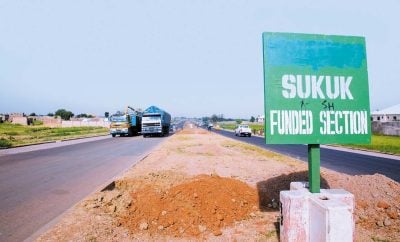
CRDB’s Kijani Bond (Kijani is Swahili for ‘green’), a $300m debt security, is the largest in sub-Saharan Africa and is set to be implemented over a five-year period under a multi-currency Medium Term-Note (MTN) programme.
CRDB is aiming to raise upwards of $22m in the first year. Upon full operationalisation, the bond is expected to yield $37.34m in the 2024/25 fiscal year, $78.84m in 2025/26, and $83m in 2026/27.
These proceeds, according to the bank, will be directed to sponsoring environment-friendly projects to mitigate against climate change in sectors such as renewable energy, infrastructure, water supply, manufacturing, and construction.
Green bonds are fixed income instruments whose proceeds are intended exclusively for projects with environmental benefits, mostly related to climate change mitigation and adaptation. Such bonds may come with tax exemption and tax credits, making them a more attractive investment compared to ordinary bonds.
While the bank has capped a 10.25% interest rate for the green bond, which will be payable twice per annum, the first offer opening, directly handled by CRDB, has been running from 31 August to close on 6 October, 2023. Thereafter, the bond will be publicly listed on the Dar es Salaam Stock Exchange and the London Stock Exchange. Speaking during the launch of the Kijani Bond on 9 September, CRDB Bank’s CEO Abdulmajid Nsekela underscored its accessibility, stating that one only needs a minimum initial investment to opt in.
“This is an investment that even an average Tanzanian can partake in and benefit from, with a minimum initial sum of just $200,” he said.
Individuals can visit any CRDB branch or authorised broker to invest in the bond. According to Nsekela, this is a stable investment that protects investors against market fluctuations. Dr Ally Laay, CRDB Bank’s Board Chairman, emphasised that the bond will offer loans both in Tanzanian shillings and US dollars, presenting an opportunity for both local and international investors to benefit.
“CRDB Bank has often been a pioneer,” Evans Osano, Director, Capital Markets, FSD Africa said. “The issuing of this trailblazing green bond demonstrates that Tanzania’s rapidly expanding green economy presents huge opportunities for investors, both international and domestic.”
Already, the International Finance Corporation (IFC), a member of the World Bank Group, has shown interest with intent to invest in 40% of the $300m issuance.
Nicodemus Mkama, Chief Executive of the Tanzania Capital Market and Securities Authority (CMSA) noted the bond holds huge potential for climate finance development in the country. “We expect that the Kijani Bond will be instrumental in further developing green financing in Tanzania.”
Various entities are involved in the operationalisation of the Kijani Bond, with legal advisory by Denton Tanzania Law Chamber, technical support by FSD Africa, underwriting by Stanbic Bank, brokerage by Orbit Securities Tanzania, reporting accountancy by KPMG, and second-party opinion by Sustainalytics.
African Green Bonds worth $3.96bn
The first green bonds in Africa were issued by the European Investment Bank in 2007 but by the end of 2021, the continent had issued $3.96bn worth of such bonds. South Africa still commands more than 70% of Africa’s green bonds, but the rise of Nigeria, Morocco, Kenya, Ghana and now Tanzania could lower its share. The African Development Bank has so far been the biggest issuer of green bonds in Africa.
“Green and sustainable bonds, together with the increased level of transparency that they bring with them, can help many countries in the region in their journey towards securing market financing for future investments,” says Jorge Familiar, World Bank Vice President and Treasurer.
But according to Jean-Paul Adam, Director of Policy and Advocacy at the UN Office of the Special Advisor on Africa (OSAA), Africa still lags behind in green bond issuance. “While Africa has 23% of official climate finance, it has less than 1% of global green bond issuances and is paying more than twice more than similarly rated peers to access markets,” he notes.
Tanzania’s economy is highly dependent on sectors affected by climate change, with the UN estimating that climate hazards could wipe up to 2% off Tanzania’s GDP per year by 2030.
To avert this, CRDB bank has been making strides in advocating for climate financing, in line with Tanzania’s National Financial Sector Development masterplan 2020/2021 – 2029/2030, a strategic blueprint to empower both private and public sectors for the greater welfare of the people.
Notably, the bank says it has been dedicating a 1% cut of its profits to the facilitation of local environmental activities. It also finances climate resilience and adaptation projects.
Want to continue reading? Subscribe today.
You've read all your free articles for this month! Subscribe now to enjoy full access to our content.
Digital Monthly
£8.00 / month
Receive full unlimited access to our articles, opinions, podcasts and more.
Digital Yearly
£70.00 / year
Our best value offer - save £26 and gain access to all of our digital content for an entire year!

 Sign in with Google
Sign in with Google 



